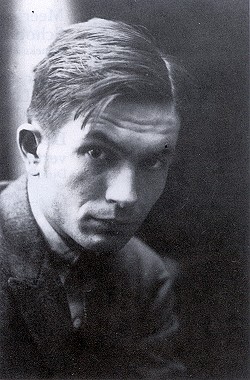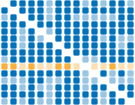The page of Ostaijen, Paul van, English biography
Biography
Flemish poet and theorist (Antwerpen, 22.02.1896 – Miavoye-Anthée, 18.03.1928).
“I was born. This has to be assumed, even though an absolute-objective proof cannot be found. The axiom is the domain of subjective experience. Objective is only guessing. So: were we born? Seeing. Feeling. But laughing because this proof is so little convincing. I’m asking: who was really born? Nevertheless: I was born. In spite of valid doubts, I also have to doubt these doubts. Right from the beginning the human function seems to have been determined as the doubt of the doubt” (Ostaijen 1964, 24). This is how the philosophically interested Van Ostaijen opens one little part of his oeuvre, a text called “Zelfbiografie” (“autobiography”). The things he tells in it are actually the only things that he considers essential for himself and in order to understand his poetry. Below, however, there is a summary of more or less important facts and details.
Paul van Ostaijen was born in Antwerp on February 22nd, 1896. His father was a Dutch plumber who had moved to Belgium, his mother was a girl from Belgian Limburg.
At school he didn’t really shine. Having been dismissed from three different schools he ended up in an Antwerp grammar school on Rooseveltplaats (a school, by the way, which could also count Willem Elsschot as one of its – unsuccessful – pupils). However, he didn’t do any better there. He did prove to be a ringleader in several rebellious activities, but had little success in his studies. Having failed the third year of the Greek-Latin grammar school he was also dismissed from this one.
In 1914 van Ostaijen got a job at the city administration. During the World War he got in contact with several important modernistic artists from Antwerp, such as the brothers Jespers and Paul Joostens. His activist attitude during the War and his participation in a demonstration against the pro-French Fleming and cardinal Mercier made his situation in Belgium impossible. In order to escape a jail sentence van Ostaijen moved to Berlin in 1918 together with his girlfriend Emmeke.
There he found himself back in a city that was the focus of cultural life. The time in Berlin was one of the most inspiring and regarding his art one of his most creative periods of his life. This is where he got to know the international avant-garde. Dadaism and expressionism would trickle into his work and influence him strongly. When he returned to his birthplace in 1921 van Ostaijen had already swum through all these literary waters. With his own poetry he also brought these movements into Dutch literature.
There were several newspapers and magazines in which van Ostaijen published not only poetry, but also well-thought-out essays and critical texts. Ruimte was probably the most important medium, but he also published his works in Carolus, De Vlaemsche Gazet, Het Toneel, De Antwerpsche Courant, Ons Land and later in the moderately catholic Vlaamsche Arbeid.
In 1924 van Ostaijen was diagnosed with lung-tuberculosis, an illness which would only worsen. After a few stays in sanatoria, in 1927 van Ostaijen left for a sanatorium in the Wallonian village Miavoye-Anthée. It would be his last trip and his last residence. He died there in March 1928 and was buried in the same place. In 1932 the mortal remains were transferred to the cemetery Schoonselhof in Antwerp, where a sculpture by Oscar Jespers was placed on his grave in 1937. While the life of Paul van Ostaijen was short and not very fascinating, his “afterlife” was special. Not only did he become a key figure in Flemish poetry, he also became an example worth following, as Geert Buelens showed in his study Van Ostaijen tot heden. Zijn invloed op de Vlaamse poëzie (2001). And as late as in 1996 a statue by Wilfried Pas was unveiled on the occasion of van Ostaijen’s birth centennial.
(Editor of this page: P. T.)




